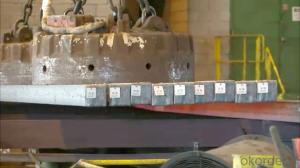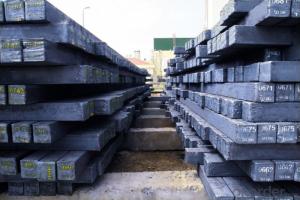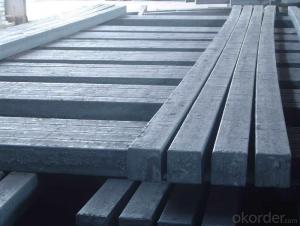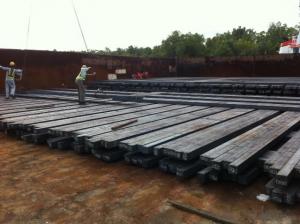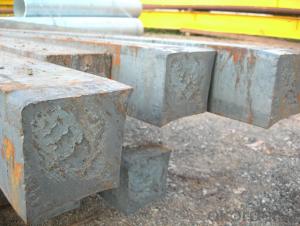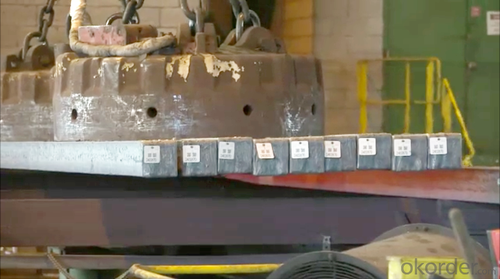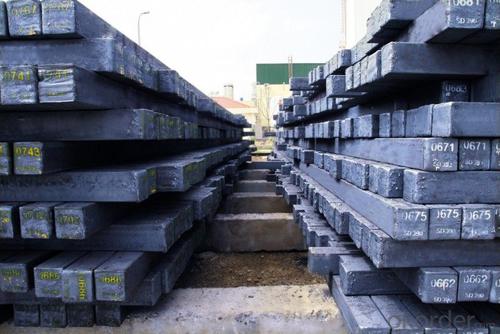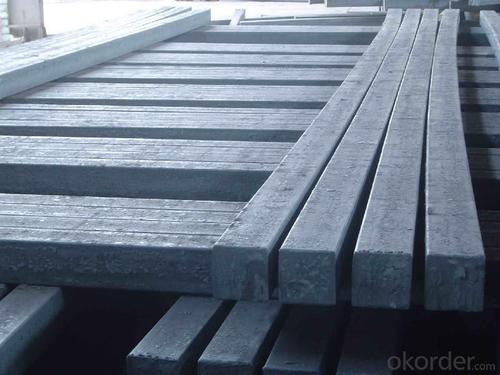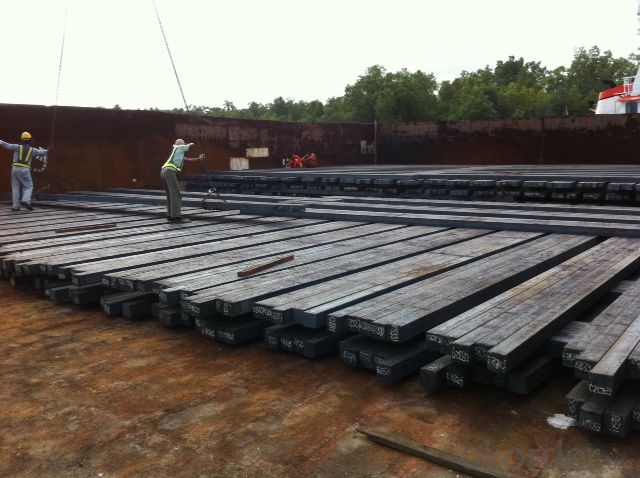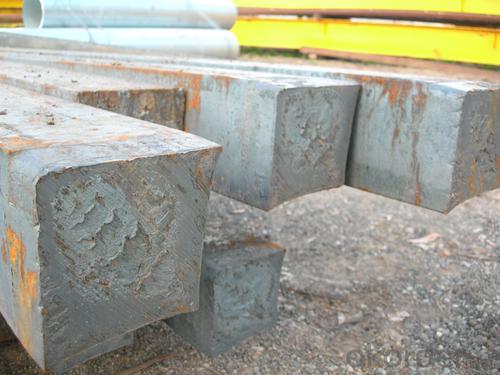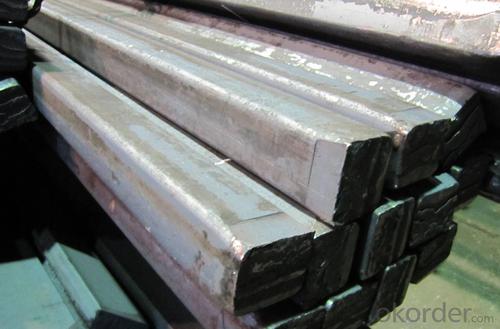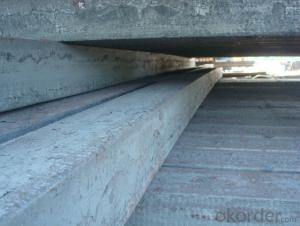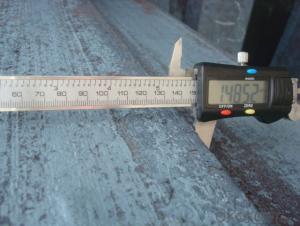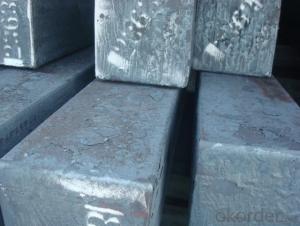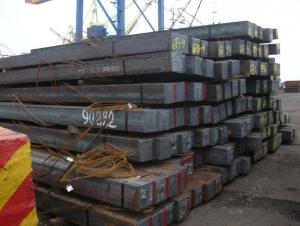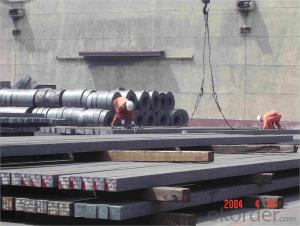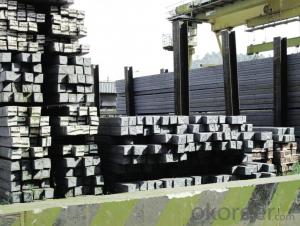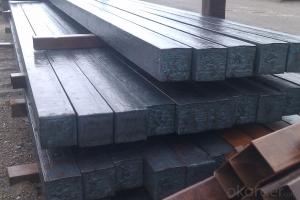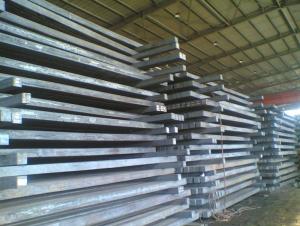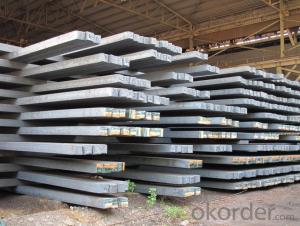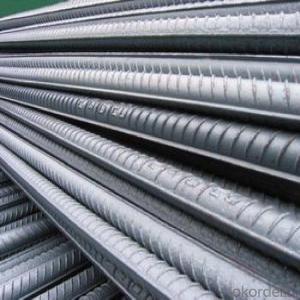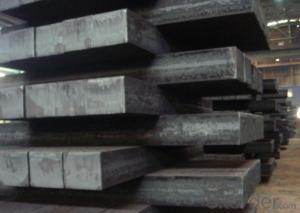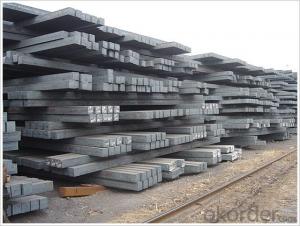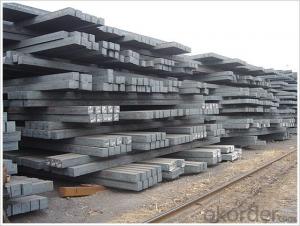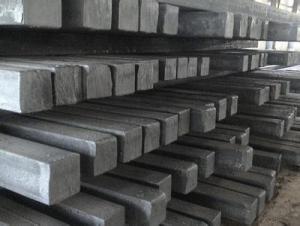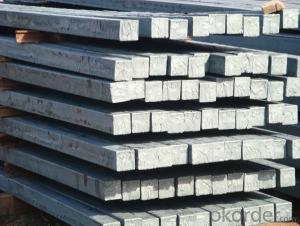Q235/3SP 135MM Blast Furnace Hot Rolled Steel Billet
- Loading Port:
- Tianjin
- Payment Terms:
- TT OR LC
- Min Order Qty:
- 2000 m.t.
- Supply Capability:
- 30000 m.t./month
OKorder Service Pledge
OKorder Financial Service
You Might Also Like
Description of Q235/3SP 135MM Blast Furnace Hot Rolled Steel Billet
Our hot dip galvanised steels consist of a steel substrate with a metallic zinc coating applied by means of a continuous hot dip galvanising process. Metallic zinc coatings are available in steel grades ranging from steel for bending and deep drawing applications, to structural steels and high yield strength steels.
A glossy surface finish obtained under specific skin-pass conditions (either non-skin-passed or skin- passed with smooth cylinders to obtain low roughness) can be provided if required at time of enquiry.
Advantage of Q235/3SP 135MM Blast Furnace Hot Rolled Steel Billet
Uncoated CR steel sheet With the features of in line with the international highest standards in demension and shape, excellent surface finish and properties, the products are mainly used in home appliance and automobile industries.
Galvanized steel sheet(include HDG and EG)
With the features of good corrosion resistance, the products are mainly used in automobile, home appliance, electronics, building and machinery manufacture industries, etc.
Precoated steel sheet With the features of enviromental protection and good processablility, long lasting surface durability, rich in colors, the products are maily used in building, home appliance and furniture industries, etc.
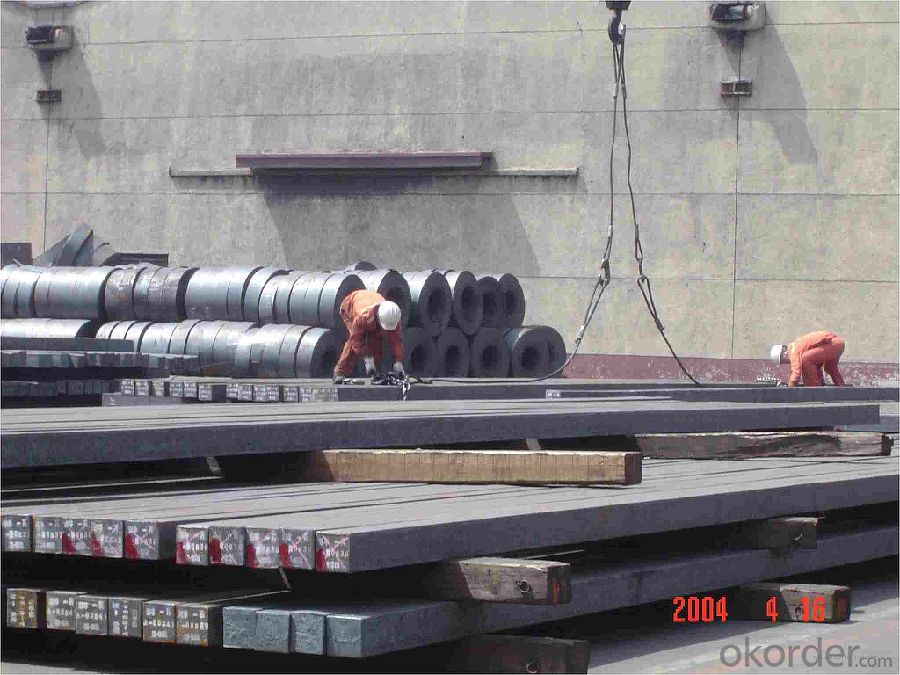
Applications of Q235/3SP 135MM Blast Furnace Hot Rolled Steel Billet
Our hot dip galvanised steels can be used in a very wide range of applications for industrial markets, both indoors and outdoors. Some of the most common applications are:
Building: wide sections for roofing and cladding, doors, door frames, metallic ceilings, partitions, structural members etc
Domestic appliances: all appliances for this sector (both white and brown goods) are manufactured with hot dip galvanised steels
Miscellaneous: electrical cabinets, aeraulic components, air conditioners, road signs etc
Zinc hot dip galvanised steel is suitable for contact with foodstuffs under certain conditions, as specified in European directive 89/109/EEC and French standard NF A 36-712-1. Please contact us for further information on this subject.
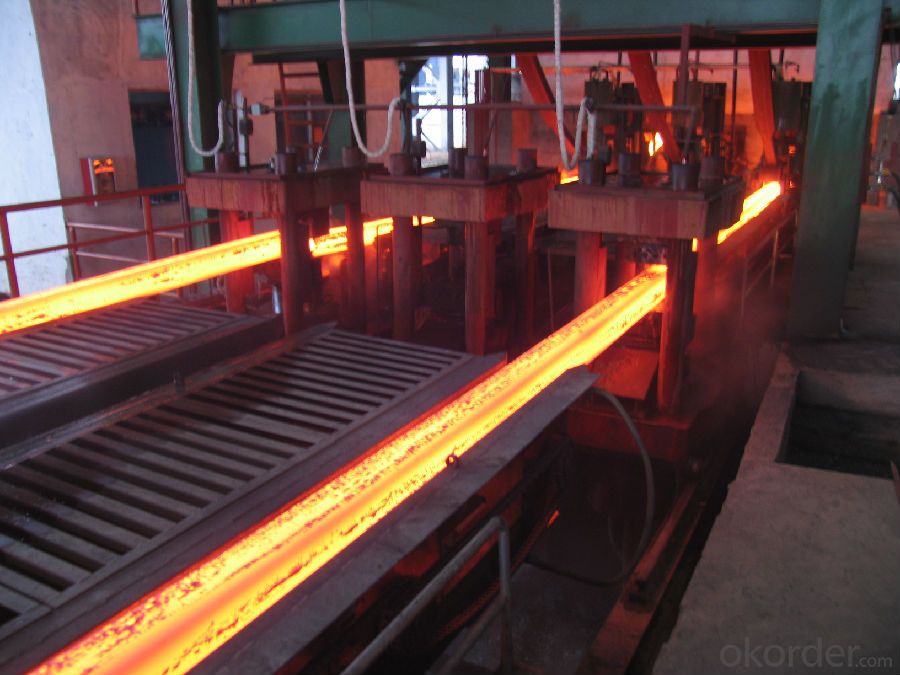
Specifications of Q235/3SP 135MM Blast Furnace Hot Rolled Steel Billet
Quality | Q/BQB 440-2003 | JIS G3312-1994 JIS G3321 | EN 10326-2004 | ASTM A653-02a |
EN 10327-2004 | (BASE PLATE) | |||
(BASE PLATE) | ||||
Commercial Steel | DC51D | SGCC SGLCC | DX51D+Z DX51D+AZ | CS Type A/B/C |
Forming Steel | St01,St02,St03 | SGCD1 SGLCD1 | FS Type A, Type B | |
Drawing | DC52D /DC53D | - | DX52D+Z DX52D+AZ | DDS TYPE A/C |
Steel | DX53D+Z DX53D+AZ | |||
Structural | S280GD (StE28) | SGC400 SGLC400 | S280D+Z DX54D+AZ | SS275 |
Steel | S350GD (StE34) | SGC440 SGLC440 | S350D+Z S350D+AZ | SS340 Class1 |
FAQ of Q235/3SP 85MM Blast Furnace Hot Rolled Steel Billet
We have organized several common questions for our clients,may help you sincerely:
1. How Can I Visit There?
Our company is located in Tianjin City, China, near Beijing. You can fly to Tianjin Airport Directly. All our clients, from home or aboard, are warmly welcome to visit us!
2. How Can I Get Some Sample?
We are honored to offer you sample.
3. Why choose CNBM?
Our delivery time about 15-20days for standard sizes, if you have other requirements like hardness, quanity and width ,it is about 20-40days. But don't worry we also try our best for the delivery time ,because time longer and our cost is higher.
- Q: How are steel billets used in the production of marine vessels?
- Steel billets are an essential component in the production of marine vessels. They are used as raw material to manufacture various structural components and parts of the vessels. Firstly, steel billets are melted and then cast into different shapes and sizes, depending on the specific requirements of the vessel. These billets are commonly transformed into plates, beams, channels, and sections, which are integral to the overall structure of the vessel. These steel components are used in constructing the hull, the main body of the ship that provides the necessary strength and buoyancy. The hull is typically built using steel plates and sections made from steel billets. These steel components are welded together to form a robust and watertight structure capable of withstanding the harsh conditions at sea. Moreover, steel billets are also used to manufacture other vital parts of marine vessels such as the superstructure, decks, bulkheads, and frames. These components are crucial for providing stability, strength, and support to the vessel. Steel billets are formed into the required shapes and sizes before being assembled and welded together to create these components. Additionally, steel billets are used in the production of machinery and equipment on board marine vessels. For example, the propulsion systems, engines, and various mechanical components are often made from steel billets. These parts are crucial for the vessel's functionality and ensure the smooth operation of the ship. In summary, steel billets play a vital role in the production of marine vessels. They are transformed into various structural components, parts, and machinery that are integral to the construction and functionality of the vessel. Without steel billets, the production of marine vessels would not be possible, as they provide the necessary strength, durability, and stability required for safe and efficient maritime operations.
- Q: How are steel billets used in the manufacturing of bars and rods?
- Steel billets are used as the raw material in the manufacturing of bars and rods. The billets are heated and then passed through a series of rollers to shape them into the desired size and shape. This process, known as hot rolling, increases the strength and durability of the steel, making it suitable for various applications such as construction, automotive, and machinery industries.
- Q: What are the main alloying elements used in steel billet production?
- The main alloying elements used in steel billet production are carbon, manganese, silicon, and chromium.
- Q: What are the main factors affecting the toughness of steel billets?
- There are several main factors that can affect the toughness of steel billets. 1. Composition: The chemical composition of the steel, including the presence of certain elements such as carbon, manganese, and silicon, can significantly impact its toughness. For example, higher carbon content tends to increase hardness but decrease toughness, while the addition of alloying elements like nickel or chromium can improve both strength and toughness. 2. Heat treatment: The heat treatment process, including the rate of cooling and the temperature at which it is performed, can have a significant effect on the toughness of steel. Quenching and tempering are common heat treatment techniques used to enhance the toughness of steel by controlling the microstructure and reducing the presence of brittle phases. 3. Microstructure: The microstructure of steel, which is determined by factors such as cooling rate, grain size, and phase distribution, can greatly influence its toughness. Fine-grained structures tend to exhibit better toughness compared to coarse-grained ones, as smaller grains can inhibit crack propagation. 4. Impurities and inclusions: The presence of impurities and inclusions in steel can negatively impact its toughness. These impurities can act as stress concentrators, leading to localized failure and reduced overall toughness. Therefore, the steelmaking process needs to ensure proper purification and removal of impurities. 5. Manufacturing processes: Various manufacturing processes, such as rolling or forging, can influence the toughness of steel billets. These processes can induce residual stresses and introduce defects that can affect the material's overall toughness. Proper control and optimization of these processes can help enhance the toughness of steel billets. 6. Service conditions: The specific application and service conditions of the steel billets also play a role in determining its toughness requirements. Factors such as temperature, stress levels, and exposure to corrosive environments can impact the material's toughness performance. Understanding and accounting for these conditions is crucial in selecting the appropriate steel grade and ensuring long-term durability. In summary, the main factors affecting the toughness of steel billets include composition, heat treatment, microstructure, impurities, manufacturing processes, and service conditions. By carefully considering and optimizing these factors, manufacturers can produce steel billets with the desired toughness properties for various applications.
- Q: How are steel billets cut into smaller pieces?
- Steel billets are typically cut into smaller pieces using a process called sawing or shearing. This involves using specialized machinery equipped with blades or shear tools to slice the billets into desired lengths or sizes.
- Q: What are the main factors affecting the machinability of alloy steel billets?
- Several key factors influence the machinability of alloy steel billets. Firstly, the machinability can be affected by the alloy composition of the steel. Different alloying elements, including chromium, nickel, molybdenum, and vanadium, have varying impacts on the machinability. Chromium and molybdenum, which form hard carbides, tend to decrease machinability, while nickel and vanadium, which promote the formation of softer carbides, can enhance machinability. Secondly, the heat treatment of the alloy steel billets significantly impacts machinability. Processes such as annealing, normalizing, or quenching and tempering can alter the microstructure and hardness of the steel. Proper heat treatment can improve machinability by reducing hardness and increasing toughness, while improper heat treatment can result in increased hardness and decreased machinability. Thirdly, the presence of impurities and inclusions in the alloy steel billets can affect machinability. Inclusions, such as sulfides, oxides, and non-metallic particles, can cause tool wear and chip breakability issues during machining. Therefore, the cleanliness and purity of the alloy steel billets are crucial factors in determining machinability. Furthermore, the mechanical properties of the alloy steel, such as hardness, strength, and ductility, can influence machinability. Higher hardness and strength levels can make machining more challenging, while increased ductility and toughness can improve machinability. Lastly, the cutting conditions and machining parameters, including cutting speed, feed rate, depth of cut, and tool material, also impact machinability. Optimal cutting conditions should be selected based on the specific alloy steel composition and desired machinability. Adequate cooling and lubrication during machining are also essential to reduce friction and heat, preventing tool wear and improving machinability. In conclusion, the machinability of alloy steel billets is influenced by factors such as alloy composition, heat treatment, impurities and inclusions, mechanical properties, and cutting conditions. Proper consideration of these factors can help optimize the machinability of alloy steel and ensure efficient and effective machining processes.
- Q: What are the different methods of shaping steel billets?
- There are several methods of shaping steel billets, including hot rolling, cold rolling, forging, extrusion, and casting. Each method involves different techniques and processes to shape the steel billets into desired forms and dimensions.
- Q: How do steel billets contribute to the overall recyclability of a structure?
- Steel billets play a significant role in enhancing the overall recyclability of a structure. These billets, which are semi-finished steel products, are produced by melting iron ore and other raw materials in a blast furnace. Due to their composition and manufacturing process, steel billets possess several characteristics that contribute to the recyclability of a structure. First and foremost, steel is one of the most recycled materials on the planet. Steel billets can be recycled indefinitely without losing their quality or integrity. This means that at the end of a structure's lifespan, the steel components can be easily dismantled and the steel billets can be melted down to produce new steel products. The ability to recycle steel billets reduces the need for extracting and refining new iron ore, which in turn conserves natural resources and minimizes the environmental impact associated with mining activities. Furthermore, the recycling process of steel billets requires significantly less energy compared to the production of steel from raw materials. Recycling steel billets consumes around 75% less energy compared to producing steel from scratch. This energy efficiency not only reduces greenhouse gas emissions but also contributes to cost savings during the manufacturing process. By using recycled steel billets in the construction of structures, we can reduce the carbon footprint and promote sustainable practices in the construction industry. In addition to the environmental benefits, the use of steel billets in structures also offers practical advantages. Steel is known for its strength, durability, and resilience, making it an ideal material for constructing robust and long-lasting structures. By incorporating steel billets, structures can be designed to withstand various environmental conditions, such as earthquakes and hurricanes, ensuring the safety and longevity of the building. This longevity aspect is crucial in terms of recyclability, as it allows the structure to serve its purpose for an extended period before being recycled. In conclusion, steel billets contribute significantly to the overall recyclability of a structure. Their ability to be recycled indefinitely, reduced energy consumption during the recycling process, and practical advantages such as strength and durability make steel billets an excellent choice for constructing sustainable and recyclable structures. By incorporating steel billets, we can promote a circular economy, conserve natural resources, reduce emissions, and create a more sustainable future for construction.
- Q: What are the different types of surface coating methods used for steel billets?
- There are several different types of surface coating methods that are commonly used for steel billets. These methods are employed to enhance the durability, corrosion resistance, and overall performance of the steel billets. Some of the commonly used surface coating methods for steel billets include: 1. Hot-dip galvanizing: This method involves immersing the steel billets in a bath of molten zinc. The zinc coating forms a protective layer on the surface of the steel, preventing corrosion and providing excellent durability. 2. Electroplating: In this method, a thin layer of metal, such as zinc, nickel, or chromium, is electrochemically deposited onto the surface of the steel billets. This coating provides enhanced corrosion resistance and improves the aesthetic appearance of the steel. 3. Powder coating: Powder coating involves applying a dry powder onto the surface of the steel billets, which is then heated to form a protective layer. This method provides excellent durability, resistance to chemicals, and a wide range of color options. 4. Paint coating: Paint coating involves applying a liquid paint onto the surface of the steel billets. The paint forms a protective layer that provides corrosion resistance and can be customized with different colors and finishes. 5. Thermal spray coating: This method involves spraying molten or powdered metals onto the surface of the steel billets using a thermal spray gun. The coating provides excellent wear resistance, corrosion protection, and can be customized with different materials. 6. Anodizing: Anodizing is commonly used for aluminum billets, but can also be applied to steel. It involves creating an oxide layer on the surface of the steel billets through an electrochemical process. This coating improves corrosion resistance and provides a decorative finish. Each of these surface coating methods has its own advantages and disadvantages, and the choice of method depends on factors such as the desired level of protection, aesthetics, and the specific requirements of the steel billets.
- Q: How are steel billets transported?
- Steel billets are typically transported using various modes of transportation such as trucks, trains, and ships. They are often loaded onto flatbed trucks or rail cars for land transportation, while larger quantities may be shipped in bulk on specialized vessels. Additionally, steel billets can also be transported using intermodal containers, allowing for seamless transfer between different modes of transport.
Send your message to us
Q235/3SP 135MM Blast Furnace Hot Rolled Steel Billet
- Loading Port:
- Tianjin
- Payment Terms:
- TT OR LC
- Min Order Qty:
- 2000 m.t.
- Supply Capability:
- 30000 m.t./month
OKorder Service Pledge
OKorder Financial Service
Similar products
Hot products
Hot Searches
Related keywords
